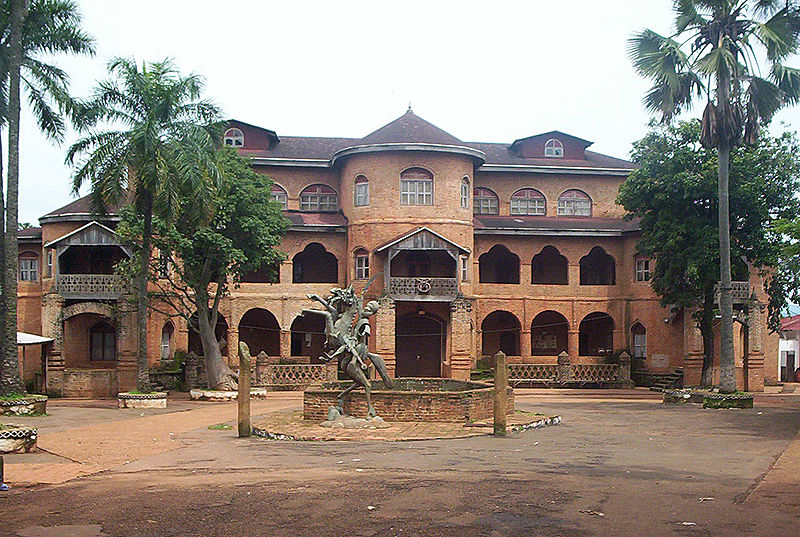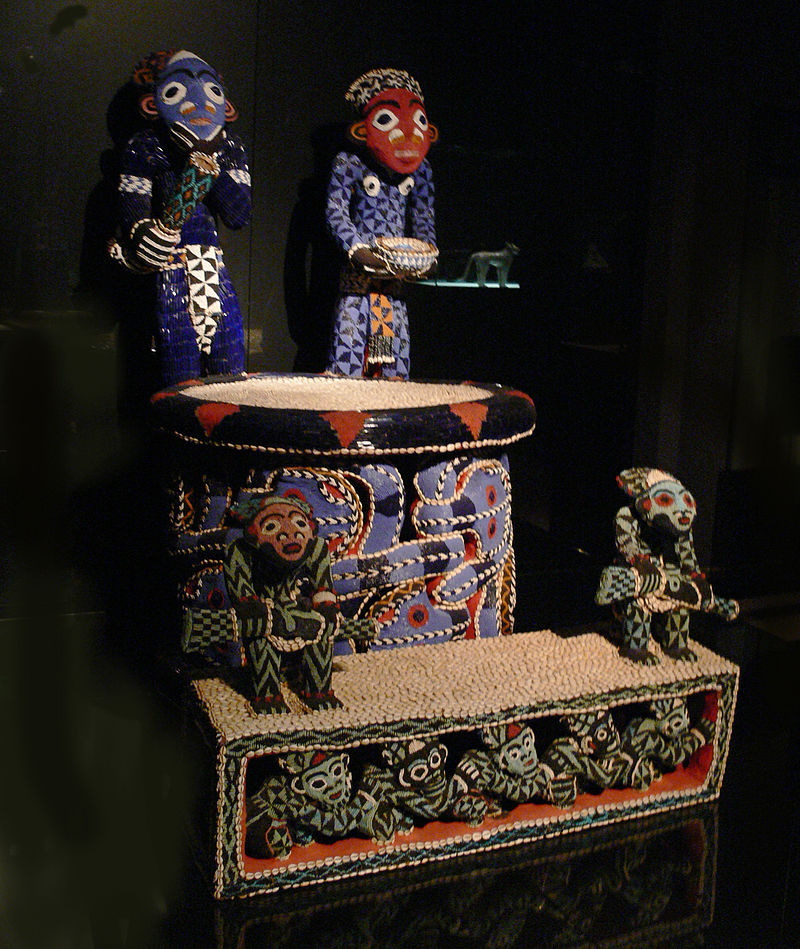Kingdom of Bamum
Key Points
- The Kingdom of Bamum (also spelled Bamoum, Bamun, Bamoun, or Mum) (1394–1884) was a pre-colonial Central African state in what is now northwest Cameroon. It was founded by the Mbum, a Bantu ethnic group from northeast Cameroon who claim descent from the Tikar of the Cameroon highlands. Its capital was the ancient walled city of Fumban. The founding king (called a "fon" or "mfon") was Nchare, a conqueror reputed to have crushed some 18 rulers. This first group of Tikar emigrants conquerors absorbed the language and customs of their new subjects and were from then on known as Mbum. Later, all peoples falling under their influence would take this name.
- Fumban is one of Cameroon's major attractions and an important centre of traditional African art. Its jewel is the Palais Royal, seat of power for the Bamoun people. The ruler of the Bamoun is known as the sultan, and the Bamoun can trace the lineage of their sultan back to 1394.
- The Bamun developed an extensive artistic culture at their capital of Foumban at the beginning of the 20th century. During Njoya’s reign six color dye pits were maintained. The Mbum imported indigo-dyed raffia-sewn cloth from the Hausa as royal cloth. This royal cloth was called Ntieya, and Hausa craftsmen were kept at palace workshops to supply nobles and teach the art of dyeing.
- During the 18th century, the kingdom faced the threat of invasion from the north by Fulani and Chamba warriors. By the end of the century, Bamum had perhaps 10,000-12,000 within its domain.
- The Bamun kingdom voluntarily became part of German Kamerun in 1884 during the reign of Mfon Nsangou.
- King Njoya was one of Bamum’s most prolific rulers and ruled from approximately 1883 to 1931. He voluntarily put his kingdom under the protection of German colonial power and was responsible for modernizing certain elements of Mbum society. He invented the Bamum script so that his people could record Bamum’s history. In 1910, Njoya had a school constructed where the script was taught. Germans were allowed to set up the Basel Mission at the capital of and construction was undertaken to build a temple. A school was built, staffed by missionaries who taught in German and the native language. The Germans introduced new housing construction techniques while settling among the kingdom’s inhabitants as farmers, traders and educators. King Njoya remained loyal to his German overlords who respected his rights as king and consulted him on colonial business.
X
External Links
This page uses materials from Wikipedia available in the references. It is released under the Creative Commons Attribution-Share-Alike License 3.0.
References Wikipedia contributors. (2019, January 10). Kingdom of Bamum. In Wikipedia, The Free Encyclopedia. Retrieved 20:38, February 3, 2019, from Link
Wikipedia contributors. (2019, March 26). Foumban. In Wikipedia, The Free Encyclopedia. Retrieved 22:52, April 24, 2019, from Link
Wikipedia contributors. (2019, February 9). Bamum people. In Wikipedia, The Free Encyclopedia. Retrieved 23:03, April 24, 2019, from Link


